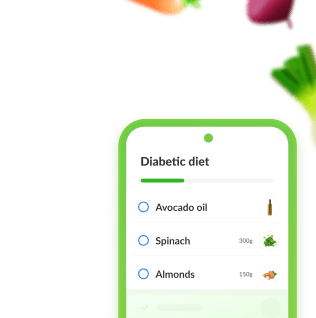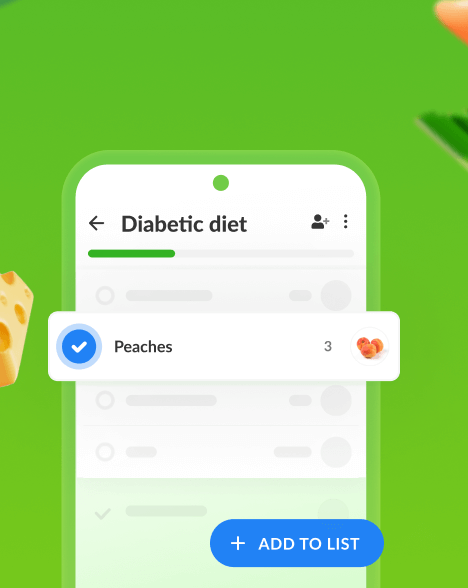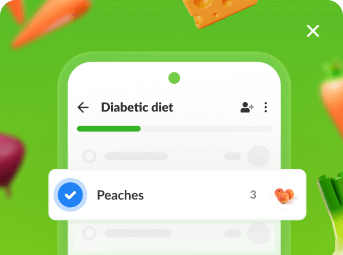Privacy Policy | Terms of services | Consent choices | © 2006-2024 Listonic. All rights reserved. Listonic Dev, and Listonic Ads are part of Listonic.
Diabetic Diet Food List (+ Shopping List and PDF)
June 27, 2023
Whether you have recently been diagnosed with diabetes or have been managing it for a while, understanding the importance of proper nutrition is vital for your overall well-being. This article will provide you with a detailed and insightful list of diabetic-friendly foods, ensuring you have a clear understanding of the delicious and nutritious choices available to you. To simplify your journey towards a balanced diet, we have also included a handy shopping list and a downloadable PDF for your convenience.
Table of contents
Diabetic Diet Shopping List
Diabetic Diet Guidelines
Diabetic Diet Food List Breakdown
What Else to Keep in Mind?
Conclusions
Diabetic Diet Food List
Diabetic Diet Guidelines
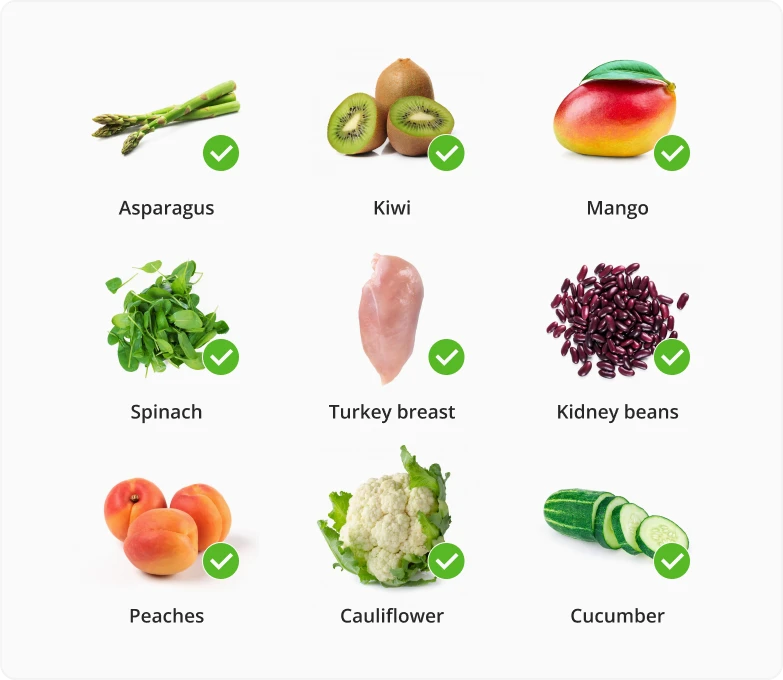
People living with diabetes need to be aware of how carbohydrates impact their bodies and take steps to ensure stable blood sugar levels through appropriate dietary modifications.
First and foremost, you should understand the impact of carbohydrates on your blood sugar. Carbohydrates are broken down into sugar during digestion, leading to a rise in blood glucose levels. Therefore, monitoring carbohydrate intake is key.
However, not all carbs are created equal. Whole grains, fruit, and vegetables are rich in fiber and essential nutrients, making them excellent choices for individuals with diabetes. They are digested more slowly, resulting in a more gradual increase in blood sugar levels.
Another essential aspect of a diabetic diet is portion control. Balancing the intake of carbohydrates, protein, and healthy fat is vital for stable blood sugar levels. Aiming for consistent meal sizes throughout the day can help prevent spikes and crashes in blood glucose levels. Smaller, more frequent meals can also aid in better blood sugar control.
Additionally, incorporating lean proteins into meals can promote satiety and prevent blood sugar spikes. Options such as skinless poultry, fish, beans, and tofu are great sources of protein without the added saturated fat found in some animal products.
Diabetic Diet Food List Breakdown
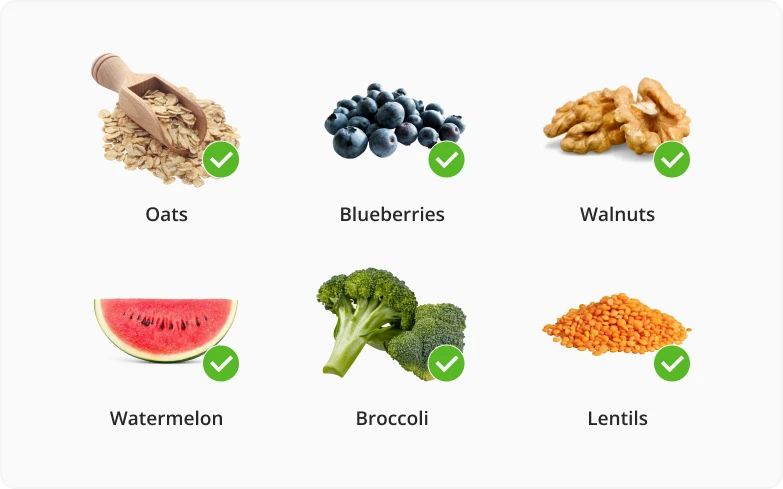
Vegetables
To get the best outcomes when managing diabetes, it’s recommended to include a variety of non-starchy vegetables into your diet. These foods come with many benefits because they offer essential nutrients such as vitamins and minerals, as well as being extremely low in calories. Vegetables also aid greatly with digestion.
When preparing vegetables, it’s best to add as little fat as possible (e.g. think of steaming)and avoid unnecessary fats which add nothing but negative effects.
Protein Sources
Protein plays a crucial role in building and repairing tissues in the body. Including lean protein sources in a diabetic diet helps promote satiety and stabilize blood sugar levels. Choose lean cuts of poultry (like chicken breast), fish (such as salmon, tuna, or mackerel), and plant-based proteins like tofu. Eggs and low-fat cottage cheese are also excellent sources of protein
Legumes
Legumes like lentils, chickpeas, black beans, and kidney beans are among highly recommended foods for diabetic diets. The fiber content sourced from legumes is incredibly beneficial because it helps to regulate carbohydrates’ digestion rate, resulting in glucose release at a more moderate pace. This is significant for controlling blood sugar levels.
Legumes also provide important nutrients like iron, folate, and potassium. Including legumes in your diet offers a wide range of meal options, such as soups, stews, salads, and bean-based dishes.
Fruit
Fruits offer a variety of natural sweetness with added benefits like fiber, but it’s important to be mindful of portion sizes and the glycemic index (GI) of fruit. Whenever possible, choose berries (blueberries, strawberries and raspberries) over other fruit due to their lower amounts of sugar content.
Citrus fruits such as oranges, grapefruit & lemons top the list too for being low on calories with high levels of vitamin C. Furthermore, surprisingly enough avocados technically qualify under this category owing to its rich heart-friendly monounsaturated fat, rather than being categorized solely under vegetables.
Healthy Fat
Including healthy fat in moderation is essential for a balanced diabetic diet. Consuming these types of fats can produce feelings of fullness while making it easier to absorb nutrients.
Healthy fat alternatives include options such as olive oil, avocado oil, nuts (almonds & walnuts), seeds (chia & flaxseeds), and nut butter (almond/peanut/cashew) which offer beneficial components like omega-3 fatty acids & Vitamin E for overall wellness promotion. These fat help promote heart health, reduce inflammation, and improve insulin sensitivity.
Dairy Alternatives
For individuals with lactose intolerance or those seeking non-dairy alternatives to cow’s milk, several alternative options such as unsweetened almond milk, coconut milk and soy milk are available. They are generally fortified with essential nutrients including calcium and vitamin D that are necessary for the body. Remember to opt for the unsweetened variety to steer clear of any extra sugars in their diet.
Get a Diabetic Diet Grocery List on Your Phone!
Add & remove items
Sort items by store aisles
Share the list with your partner
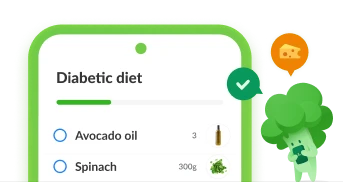

What Else to Keep in Mind?
What Foods to Avoid?
To maintain stable blood sugar levels, individuals with diabetes should avoid sugary foods and beverages, such as candies, pastries, soda, and fruit juice. Refined grains like white bread and white rice should be limited due to their quick breakdown into sugar. Fried and high-fat foods, processed meats, full-fat dairy products, and sweetened condiments should also be consumed in moderation.
These food choices can contribute to weight gain and increase the risk of complications associated with diabetes. Opting for whole foods, including lean proteins, non-starchy vegetables, whole grains, and low-sugar options, is key to a diabetic-friendly diet.
Conclusions
A diabetic diet plays a vital role in managing blood sugar levels and overall health. By following a well-balanced diabetic diet and working with healthcare professionals, individuals with diabetes can make informed dietary choices to better manage their condition and improve well-being. To make it even easier, you can find our free diabetic diet shopping list in this article along with the PDF. Enjoy!

